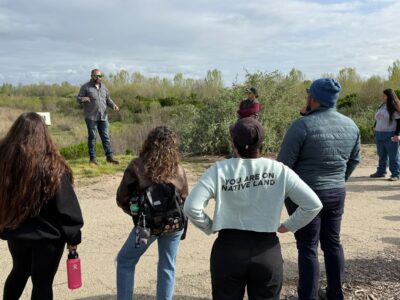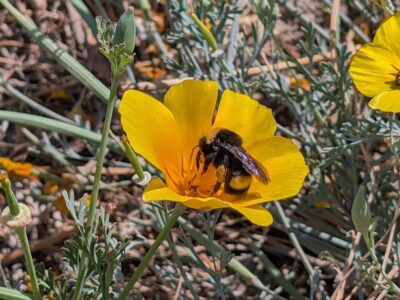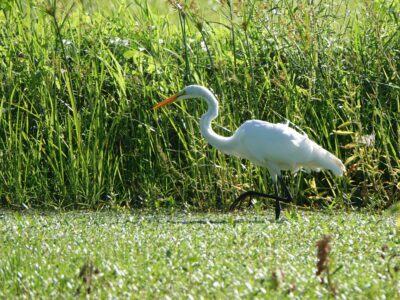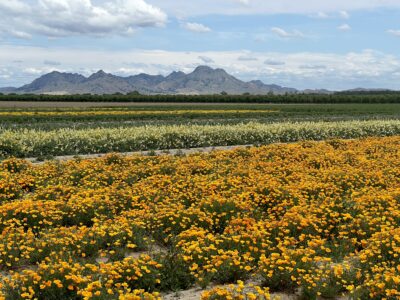- With the rate of environmental restoration in California and nationwide growing rapidly, demand for native seeds has increased but the supply hasn’t caught up, according to a recent report.
- California cannot achieve its restoration and conservation goals without an ample supply of high-quality, restoration-appropriate native seeds and plants.
- River Partners’ Heritage Growers Native Seed and Plant Supply is taking action to break the native seed bottleneck. This year, our production of native seeds increased from 12 acres to 156 acres, and our seed production team is hiring.
On a crisp morning in March, Joan Bosque stood with her clipboard, overalls, and muck boots next to black trays filled with plants. Behind her, the sun was starting to rise over rows of fields at Heritage Growers Native Seed and Plant Supply near Colusa. On the far edge of the fields, ancient valley oaks and California sycamores stood sentinel along Sycamore Slough, marking the path towards the Sacramento River, a half-mile East.
She pointed to the soggy plants—Pacific dune sedge—and looked up. Her face glowed with excitement in the cool, crisp morning air.

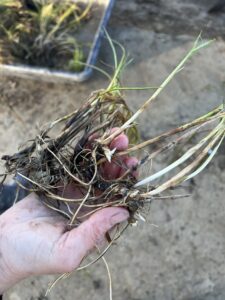
The rhizomatous sedge plants with long, green stems were coming out of six months of storage. They patiently awaited being planted out in the ground for the growing season. Bosque, who coordinates the Demonstration Garden at Heritage Growers, explained that in a few months, after the plants get established and flower, their seeds will be collected to grow plugs for restoration through Heritage Growers’ plant nursery program.
They might look like average plants to some people, but not to Bosque. “They’re like gold,” she exclaimed.
Native Seeds: California’s New Gold?
Gold, perhaps, isn’t a terrible metaphor to describe the desirability and scarcity of native California seeds and plants. With state policy and funding resources aimed to restore and conserve 7+ million acres in California, the need for native seeds and plants is great. If we’re going to be able to achieve these goals, which include restoring and conserving 30% of the state by 2030, we’re going to need a lot of plant material.

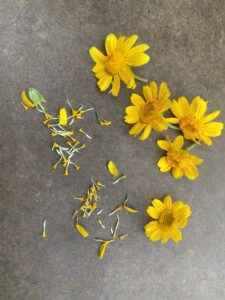
California is not alone when it comes to native seed shortage. A recent report from the National Academies of Sciences, Engineering and Medicine highlighted the critical need for a more robust native seed supply nationwide, especially as extreme weather events due to climate change, rapid loss of biodiversity, and degradation of habitats continue to pose major threats. The report calls for concerted action to build a more robust and sustainable seed supply to meet the needs of current and future ecological restoration projects across the United States.
“It was a relief to see this in the public sphere,” noted Bosque. “It is long overdue. This should have been public discourse 10 years ago.”
Scaling Up Native Seed Supply to Meet Unprecedented Opportunities for Restoration
Here in the Central Valley, River Partners and Heritage Growers are taking action to address this challenge. This year, our production of native seeds increased from 12 acres to 156 acres, with 90 total species and ecotypes in production today.
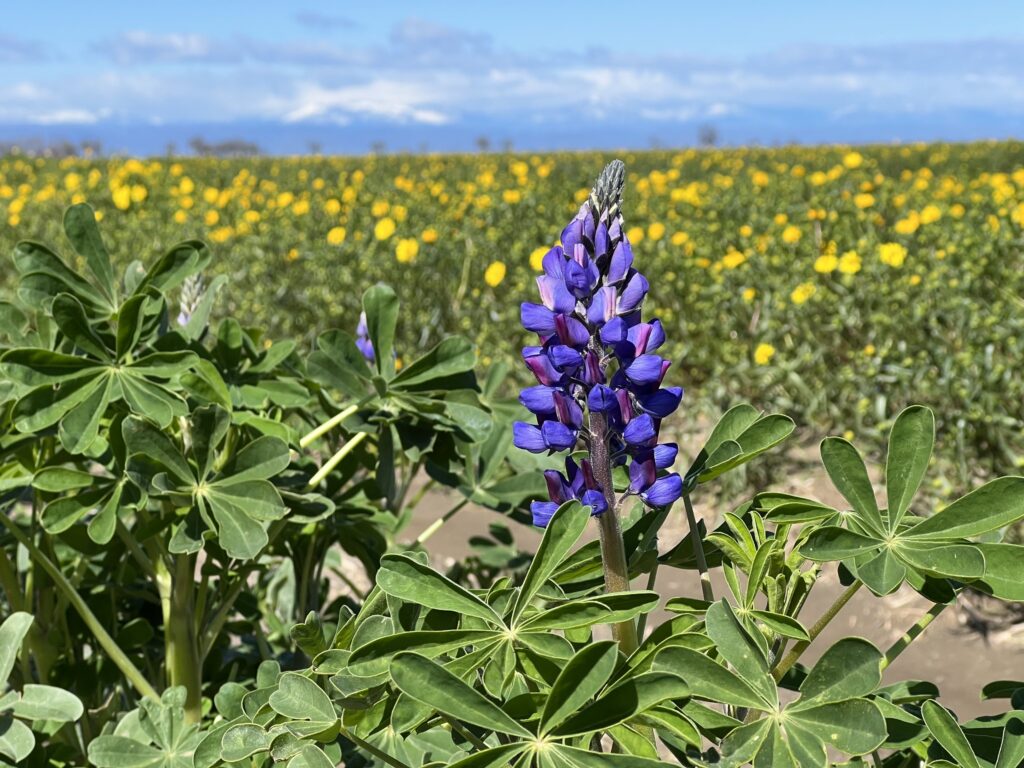
California cannot achieve its conservation goals without an ample supply of “source-identified” native seed that’s ecologically appropriate to the region that is being restored, says Heritage Growers General Manager Pat Reynolds.
He emphasizes that when it comes to ecological restoration, not just any seeds and native plants will do. Ideally, seeds used for restoration should be sourced from the same region with similar environmental conditions as the restoration site. The “native” seeds that are commonly sold at local hardware stores are not typically source-identified, and could have come from anywhere and been produced out of the state, or even country.
“Such seed would be inappropriate to use for habitat restoration, potentially failing in the long term, and even having detrimental effects on adjacent wildland native plant communities,” warns Reynolds.
Reynolds cautioned that the quality of restoration is compromised when regionally appropriate native seeds aren’t available for restoration. “You either have to forgo diversity because not enough is available, or you have to compromise, and use seeds and plants that aren’t well adapted to local conditions,” he explained.
Reynolds noted that here in California, there are only four farms producing native seeds at a scale greater than a few acres: River Partners’ Heritage Growers Native Seed and Plant Supply in Colusa County, Hedgerow Farms in Yolo County, S&S Seeds in Santa Barbara County, and Great Valley Seed Company in Merced County. More of these native seed growing facilities are needed to meet California’s conservation and restoration goals.
Close Collaboration is Key to Expanding the Menu of Currently Available Native Seeds
“There’s a disconnect between the timing of supply and demand when it comes to native seeds,” says Reynolds. “People go to buy it, but they did not order it. It can take one to five years to produce native seeds at scale, so you have to plan ahead.”
Partnership is central to Heritage Growers’ model. To date, they’ve consulted on dozens of restoration projects with federal, state, local, and non-governmental organizations. For example, they’ve partnered with the National Parks Service, Bureau of Land Management, California Association of Resource Conservation Districts, East Bay Regional Parks District, and Xerces Society, to name a few.
Reynolds explains what a good partnership can look like. “East Bay Regional Parks District are forward thinking folks. They know that if they want enough local material for their own projects, they have to collect wildland seeds and amplify them, meaning grow them out at the farm.”
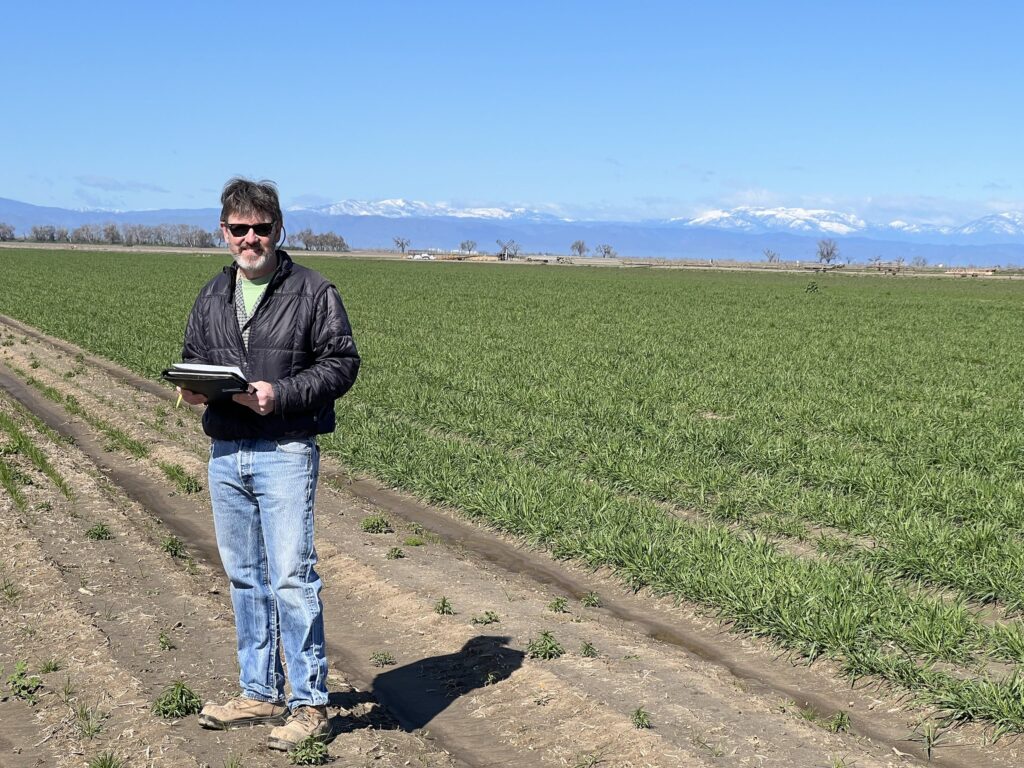
Julie Rentner, River Partners President, emphasized the importance of restoration practitioners not limiting themselves to commercially available species. “Many restoration planners take advice from the seed providers, and don’t always have an opportunity to look directly at what’s growing nearby to do wildland collection and seed amplification. That would be like not knowing what to serve for dinner and thinking that Burger King is the only menu available,” she said.
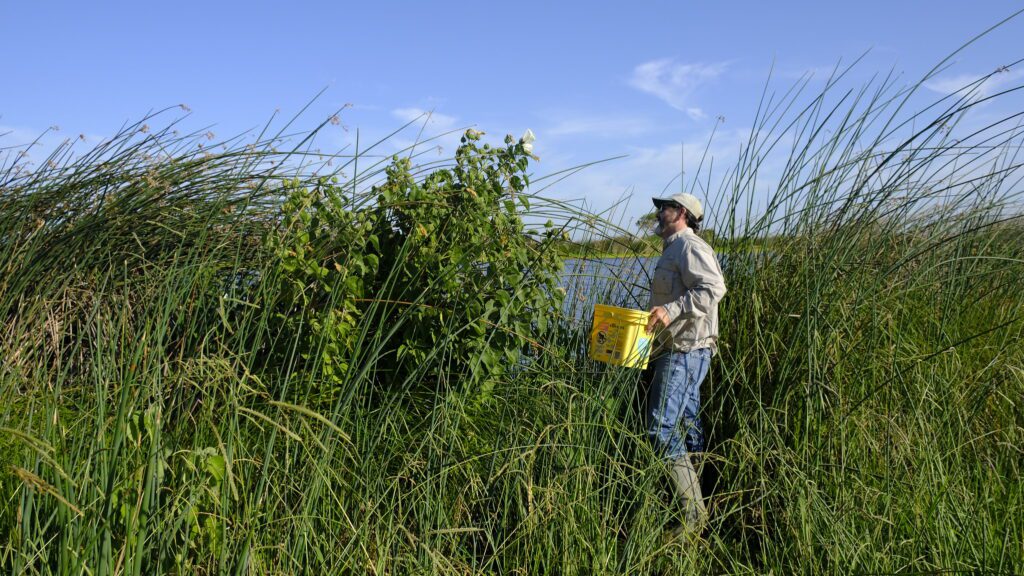
The teams at River Partners and Heritage Growers often refuse to be limited in their restoration planning efforts, and go beyond what’s commercially available to source, collect, and clean seeds for restoration. This has led to the development of new plants being made commercially available, including hedge nettle, blazing star, and soap root.
The High Cost of Seeds is Still a Major Barrier
River Partners’ motivation to avert the looming supply crisis of native seeds and plants arises directly from past experiences restoring nearly 20,000 acres of riparian habitat statewide. We’ve dealt with our fair share of seed supply issues firsthand, costing thousands of dollars and even delaying projects.
At Dos Rios Ranch Preserve, California’s largest floodplain restoration near Modesto, River Partners encountered a significant bottleneck in seed supply. The project budgeted for seed prices at the time it was funded, but by the time permits were secured and it was time to purchase seeds, prices jumped significantly. This added tens of thousands of dollars to the final project cost, and cuts had to be made on maintenance to afford the increased seed prices.
Lack of maintenance can cause more expensive problems down the line and jeopardize the success of habitat restoration efforts. Project managers shouldn’t be forced to compromise success in order to procure native seeds.
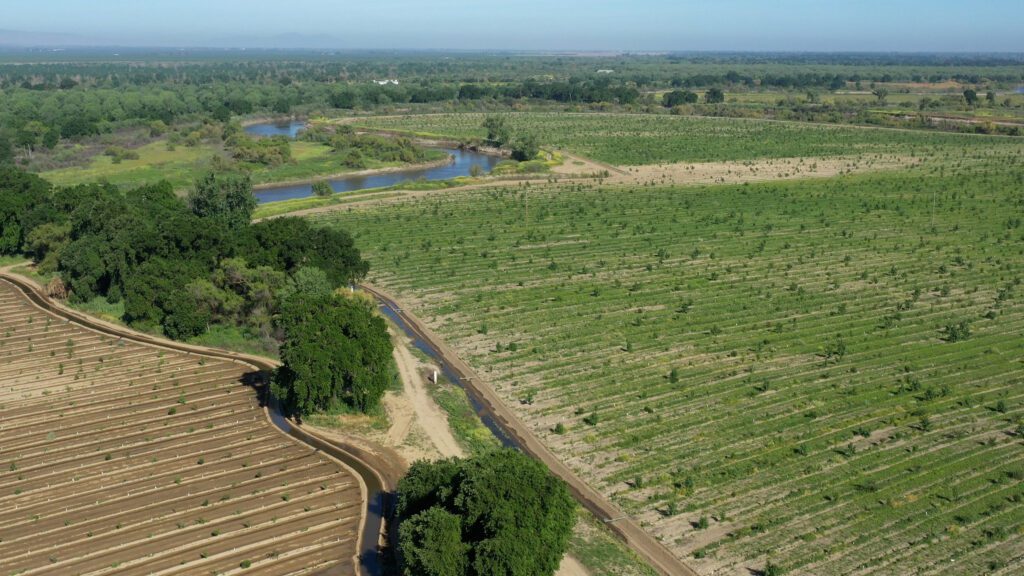
Working Together to Break the Native Seed Bottleneck
As the demand for native seeds continues to increase, it is crucial to address the barriers to building a more robust native seed supply and industry. Seed producers, farmers, California Association of Resource Conservation Districts, federal, state, city and county-level agencies, environmental consulting firms, restoration contractors, and academia need to collaborate to address these mounting challenges and find opportunities to work together to improve the supply of native seeds and plants.
“There are unprecedented opportunities for conservation and restoration right now,” says Reynolds. “We need to meet the moment with restoration-appropriate native seeds.”


